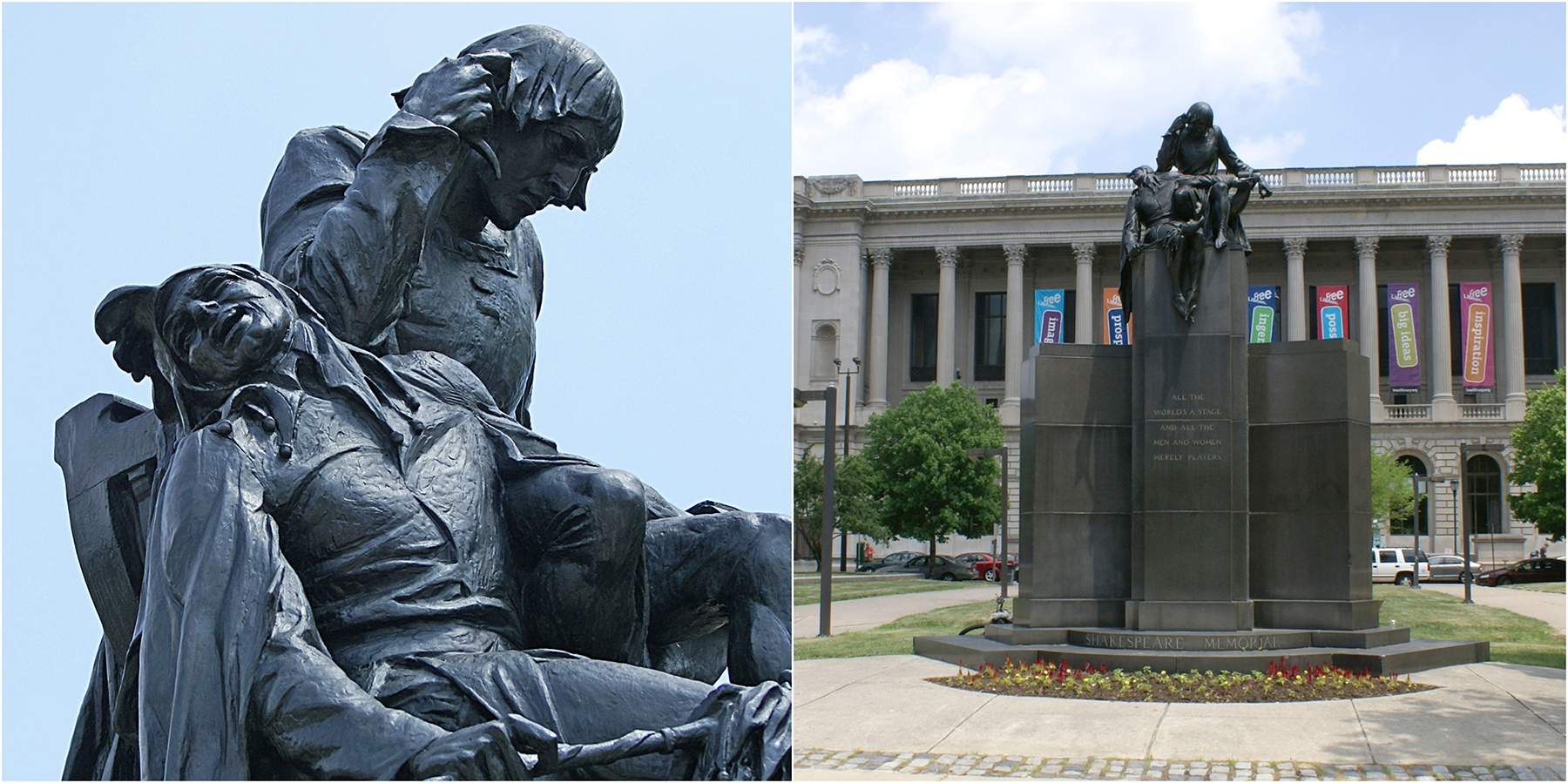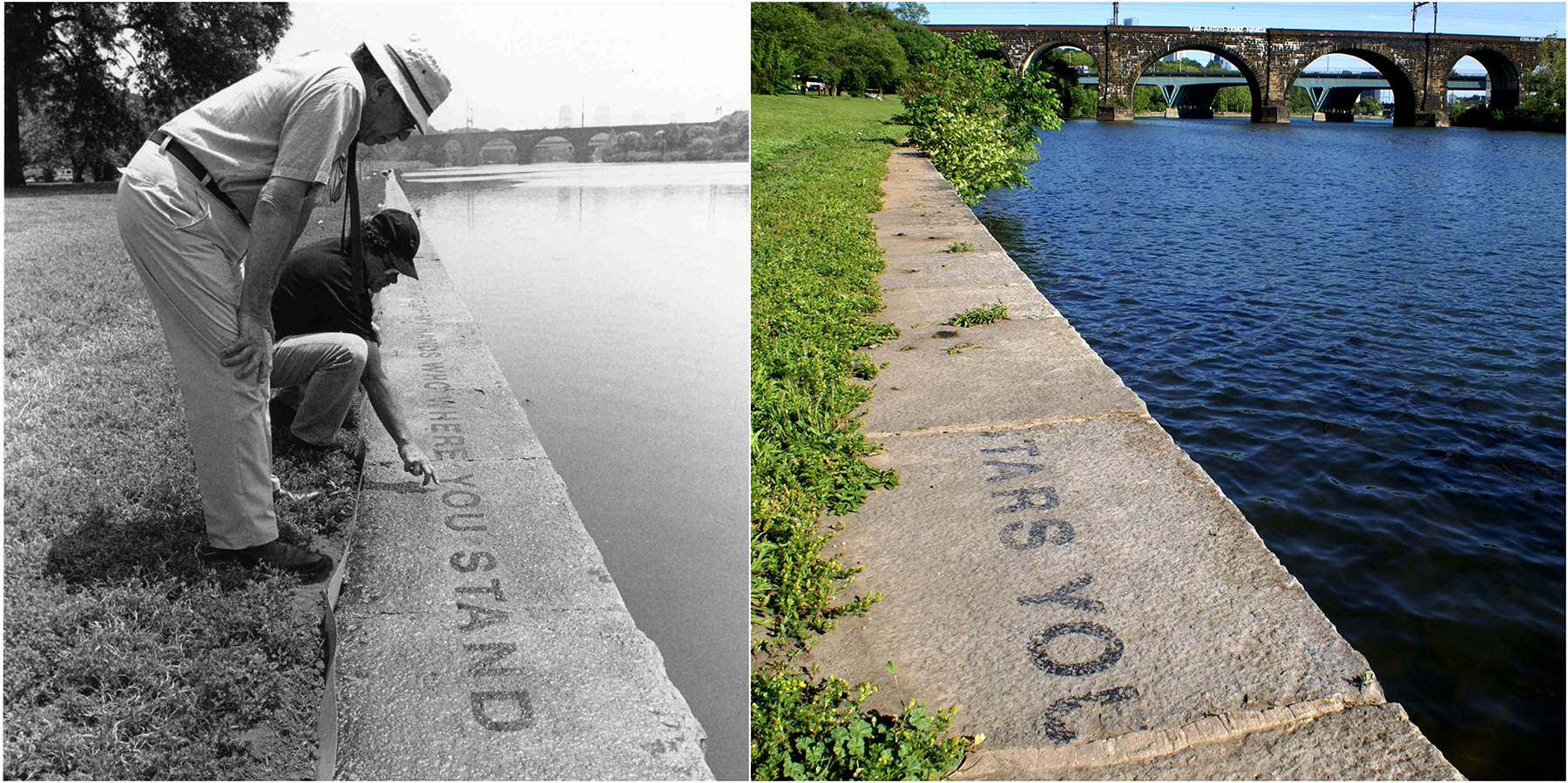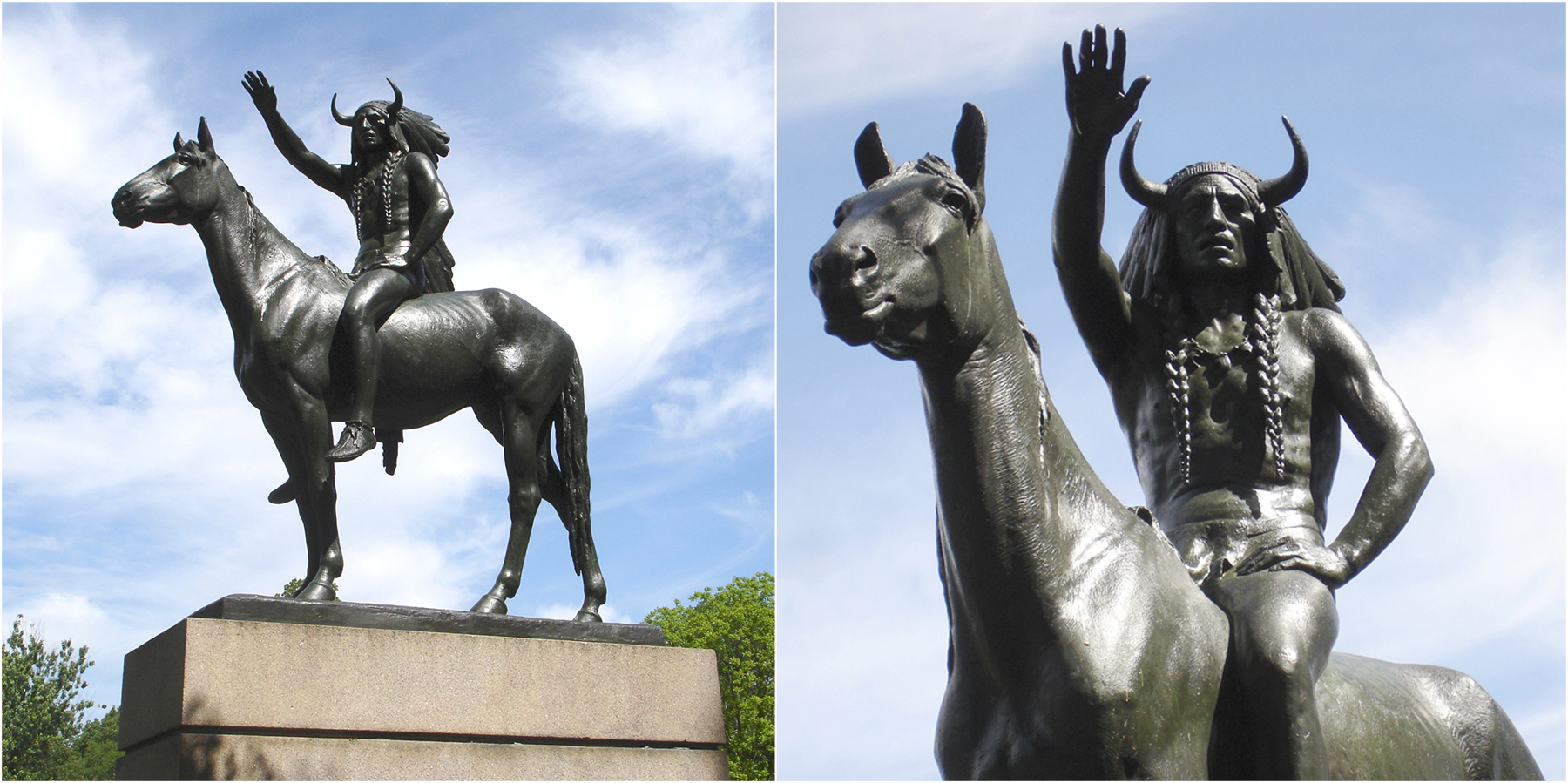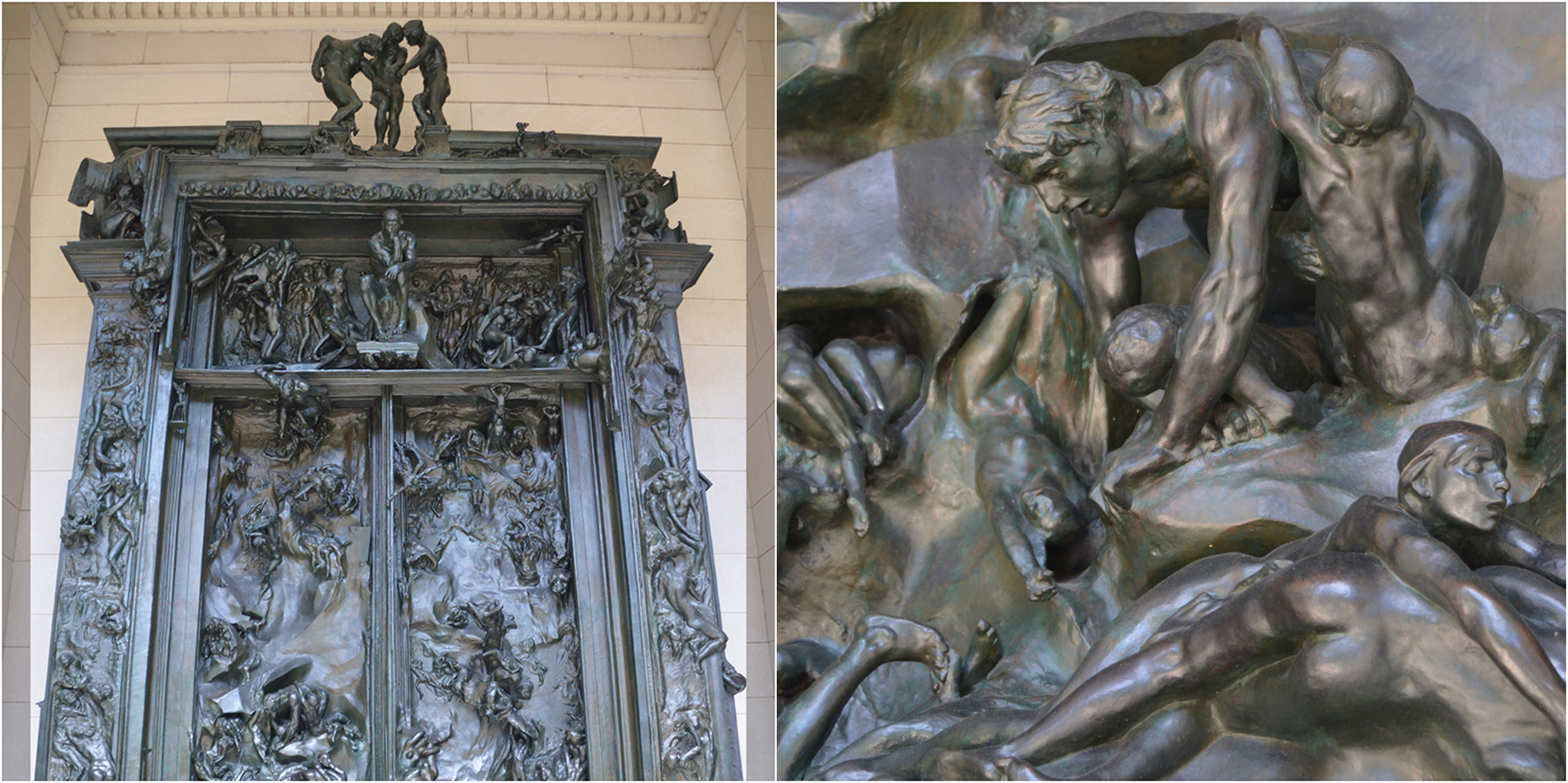Philadelphia baroque orchestra Tempesta di Mare presents “GREAT BOOKS: Classic Tales for Orchestra,” an evening of orchestral storytelling at the Kimmel Center on May 18th. Four classic literary works – William Shakespeare’s A Midsummer Night’s Dream, Miguel de Cervantes’ Don Quixote of La Mancha, Molière’s The Hypochondriac, and Ovid’s Metamorphosis – will be re-told through baroque music by Henry Purcell, George Philipp Telemann, Marc-Antoine Charpentier, and Jean-Philippe Rameau.
While the orchestra is bringing these stories to life through music, we’re here to highlight them through sculpture (in Philadelphia). We’ve selected four public artworks in the city that relate to each of these stories in some way – some pairings are obvious and some less straight forward – so read on to see our picks and the connections we make.
1.
The Story: A Midsummer Night’s Dream by William Shakespeare
Our Connection: Shakespeare Memorial by Alexander Stirling Calder
This sculpture-story connection needs little explanation. Philadelphia’s 20-foot-high Shakespeare Memorial (1926) in front of the Free Library was created in the 1920s, but the seed for the project was planted by Philadelphia artist John Sartain in the 1890s. Sartain was a member of our organization and suggested to the Association that Philadelphia erect a memorial to Shakespeare through private and public subscription. For the Association, it was the 300th anniversary of Shakespeare’s death in 1916 that called renewed interest to the fact that Philadelphia – a city that one would expect to have a memorial to Shakespeare – didn’t have one.
The Association worked with the Shakespeare Centennial Committee to establish the memorial, and the artist given the commission was Alexander Stirling Calder, who also sculpted the iconic Swann Memorial Fountain (1924) just across the street. The two Shakespearean figures depicted in the memorial are Hamlet, with his head against a knife, and Touchstone, the jester – a representation of Comedy and Tragedy. The Shakespeare Memorial was dedicated in 1929 on Shakespeare’s birthday, and today the area is unofficially known as Shakespeare Park.
>>Listen to the Museum Without Walls™: AUDIO program for the Shakespeare Memorial
Orchestra sample: Henry Purcell’s Suite from The Fairy Queen | Book inspiration: Midsummer Night’s Dream
2.
The Story: Don Quixote of La Mancha by Miguel de Cervantes
Our Connection: Sleeping Woman by Stephen Berg and Tom Chimes
The orchestra is playing a composition that focuses on Don Quixote falling asleep and dreaming of romantic adventures with his princess, and this dream state calls to mind Sleeping Woman (1991) – a roughly 1,200′ line of painted poetry with no punctuation on top of the Schuylkill River retaining wall, not far from the Playing Angels on Kelly Drive.
Like moving through a dream, lines of text appear and disappear depending on where the viewer is standing, flowing continuously without pause. Artist Stephen Berg says the inspiration may have come from watching his mother’s face while she was asleep, and the “unconscious language” that emerged from her silence. Like dreams, Sleeping Woman is (intentionally) impermanent: the work has faded over the years and even partially collapsed, which speaks to the idea of fantasy existing with reality – a major theme in Don Quixote. The artwork also embodies those themes of love and adventure: A line from Thoreau, “Nothing sweeter than sleeping with your love,” is featured in the poem, and one must venture to the river’s edge to fully experience the work, as the text will not be published according to the wishes of the artists.
>>Listen to the Museum Without Walls™: AUDIO program for Sleeping Woman
Orchestra sample: George Philipp Telemann’s Burlesque de Quixotte, TWV 55:G10 | Book inspiration: Don Quixote of La Mancha
3.
The Story: The Hypochondriac by Molière
Our Connection: The Medicine Man by Cyrus Dallin
The Hypochondriac (or The Imaginary Invalid) by French playwright Molière revolves around an old Parisian hypochondriac who is obsessed with doctors. He plans to marry his daughter to a medical student for his own benefit, and is ultimately manipulated into becoming his own doctor (who can then cure himself).
For the The Medicine Man (1899) sculpture in Fairmount Park, “doctor” or “French” may not come to mind, but those are the connections here! In Native American tribes, the medicine man (or woman) is like a doctor and a priest: the spiritual leader and healer of a tribe believed to possess powers that can cure disease and illness by warding off evil spirits and summoning the help of the “Great Spirit.” And it was in Paris where American sculptor Cyrus Dallin encountered the touring Buffalo Bill’s Wild West Show, which inspired Dallin – who grew up among Native Americans in Utah – to make works that would glorify Native Americans. The Medicine Man was exhibited at the 1900 Paris Exposition, where the Austrian government attempted to purchase the sculpture for a park in Vienna, not knowing that it had already been purchased by our organization for Philadelphia.
Orchestra sample: Marc-Antoine Charpentier’s Incidental music for Le Malade Imaginaire | Book inspiration: The Hypochondriac
4.
The Story: Metamorphosis by Ovid
Our Connection: The Gates of Hell by Auguste Rodin
The orchestra will be playing Rameau’s music for Pygmalion, a story based on Ovid’s Metamorphosis. In the story, Pygmalion the sculptor falls in love with a statue he has carved, which then comes to life with the help of Venus and Cupid. The themes in this work are love and transformation.
Auguste Rodin didn’t exactly fall in love with his sculpture, but he was similarly preoccupied with his Gates of Hell (1880-1917), located at the entrance to the Rodin Museum. Based on Dante’s Inferno, this intensely passionate work dominated Rodin’s thoughts from 1880 to 1890, and remained a source of fascination and anxiety until his death in 1917. Several figures also emerged from The Gates and “came to life” in a way: Some of Rodin’s best-known works like The Thinker and The Three Shades began as small figures in The Gates and were transformed into these larger versions. Ovid, the Roman poet who wrote Metamorphosis, was actually a favorite author of Rodin, and toward the top of the gates is a reference: two female figures in an embrace that evoke the spirit of Ovid.
Orchestra sample: Jean-Philippe Rameau’s Ballet music for Pygmalion | Book inspiration: Metamorphosis



